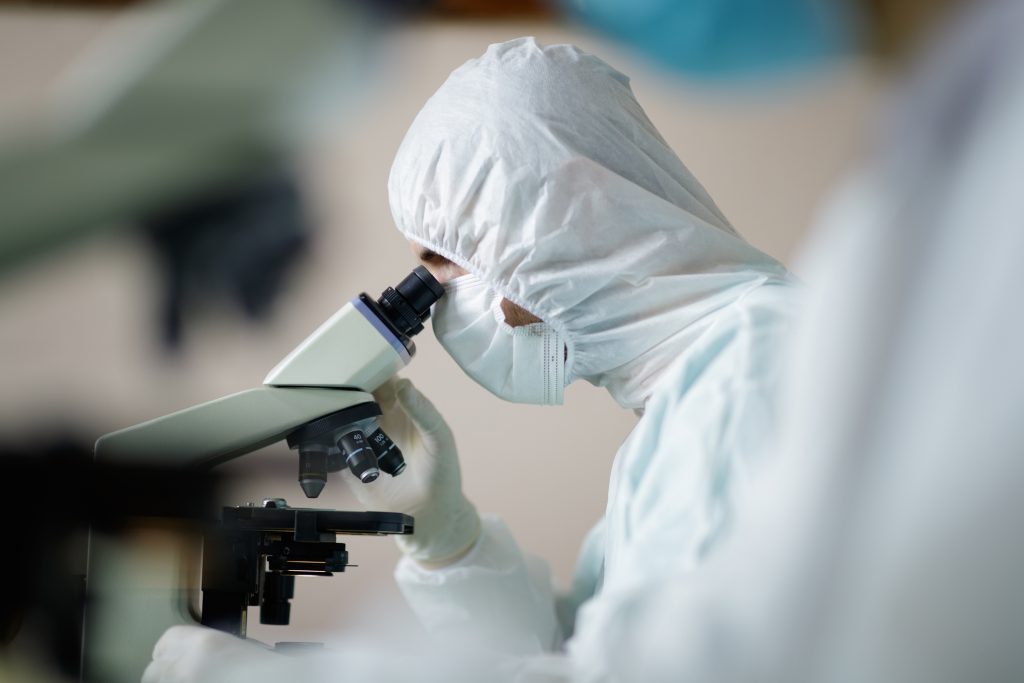
A biological revolution is underway in global manufacturing. Products produced from genetic engineering and biomanufacturing techniques are replacing many chemical, industrial and farm-based products. These include biological therapies, alternative proteins, plant-based oils, bioplastics and super strong threads, and more products such as bioconcrete are in development.
Some predict that up to 60% of physical items will soon be produced using biotechnology, making biomanufacturing a critically important emerging technology.
The upcoming leaders’ summit in Sydney is an opportunity for the members of the Quadrilateral Security Dialogue to take leadership in manufacturing this critical technology.
In a recent discussion document produced by the Takshashila Institution in collaboration with the Australian National University, we recommend that Australia, India, Japan and the US establish a Quad-led biomanufacturing hub in India.
Companies are building biomanufacturing floor space at a rapid pace but are not keeping up with demand. Europe is the leader in fermentation biotechnology capacity globally, but given rapid changes in the industry, most future biomanufacturing capacity is yet to be built.
China plans to occupy that space. In a Chinese government document on building the bioeconomy, a central theme was biomanufacturing at scale, including of plastics, oils and agri-food technology.
Many countries have expressed similar sentiments, but China has successfully dominated manufacturing of emerging technologies. The ASPI critical technology tracker shows that academics in China publish more of the top 10% most-cited academic papers for biomanufacturing than those in any other country. There’s good reason to believe China will build its biomanufacturing base faster than its competitors.
Modern biotechnology is crucial for governments trying to achieve food, health and environmental goals. Given the strategic importance of these technologies, it is essential that Quad countries not leave themselves in a vulnerable position.
The Quad has sought to address this issue with its Critical and Emerging Technology Working Group, which monitors trends in emerging technologies such as synthetic biology, genome sequencing and biomanufacturing while identifying opportunities for cooperation. But concrete measures are yet to fully develop. Our proposed hub would be an initial step in bringing Quad resources together to help create a world-leading biomanufacturing sector.
India is the best choice for hosting such a hub for three reasons.
First, it already has its own plans to become a leading biomanufacturer. So the ambition is there.
Second, it has an infrastructure base. Its expertise in pharmaceutical manufacturing can translate into biomanufacturing. India also already has a vibrant biotechnology ecosystem in Bengaluru, Pune, Hyderabad and Faridabad.
Third, India—unlike other Quad countries—has the potential to manufacture products at a competitive price point, particularly enzymes, reagents, research materials and equipment. Industry analysis indicates that the cost of life-sciences manufacturing in India is approximately 33% lower than in the US.
However, India needs a capability uplift to become a world-leading biomanufacturer, which is where the Quad comes in. The proposed Quad-led hub would invest in three main areas: strengthening physical infrastructure, bolstering workforce capabilities, and identifying opportunities for collaboration.
In terms of strengthening physical infrastructure, India will require significant investment and technology transfer to build new biomanufacturing facilities and reach the scale needed for cost competitiveness. The proposed hub can help facilitate this transfer and connect investors through a biomanufacturing fund administered through the Quad.
The hub would centralise Quad expertise for building world-class biomanufacturing facilities and create processes adhering to international standards. The creation of the Quad-led hub could provide a template for further quality infrastructure.
India already has a substantial biomanufacturing workforce, but lacks access to cutting-edge technology and training for these workers. To address this, permanent training facilities can be established in universities around a Quad hub, with experts from other Quad countries providing training where needed.
Recent policy changes in India allow the establishment of foreign universities and can encourage scholar exchange programs. Training should also focus on commercialising research and development, a common challenge for non-US countries in the Quad.
Currently, the Quad countries don’t collaborate enough in the field of biotechnology. For example, data compiled by the authors show that Australia-based authors publish more joint papers with China-based authors on the subject than they do with authors from the other three Quad members combined.
To facilitate cross-Quad collaboration, a biomanufacturing hub would house various programs for collaboration between India and other Quad countries. This would involve a research collaboration office to speed up the visa process for Indian scientists and offer flexible, quickly approved visas.
The hub must also harmonise language, regulations and data-sharing to secure biomanufacturing supply chains for Quad nations and encourage international collaboration. Such harmonisation will not only boost collaboration efforts within the Quad but also create opportunities for collaboration with nations outside it and secure the Quad’s future in a critical emerging industry.

